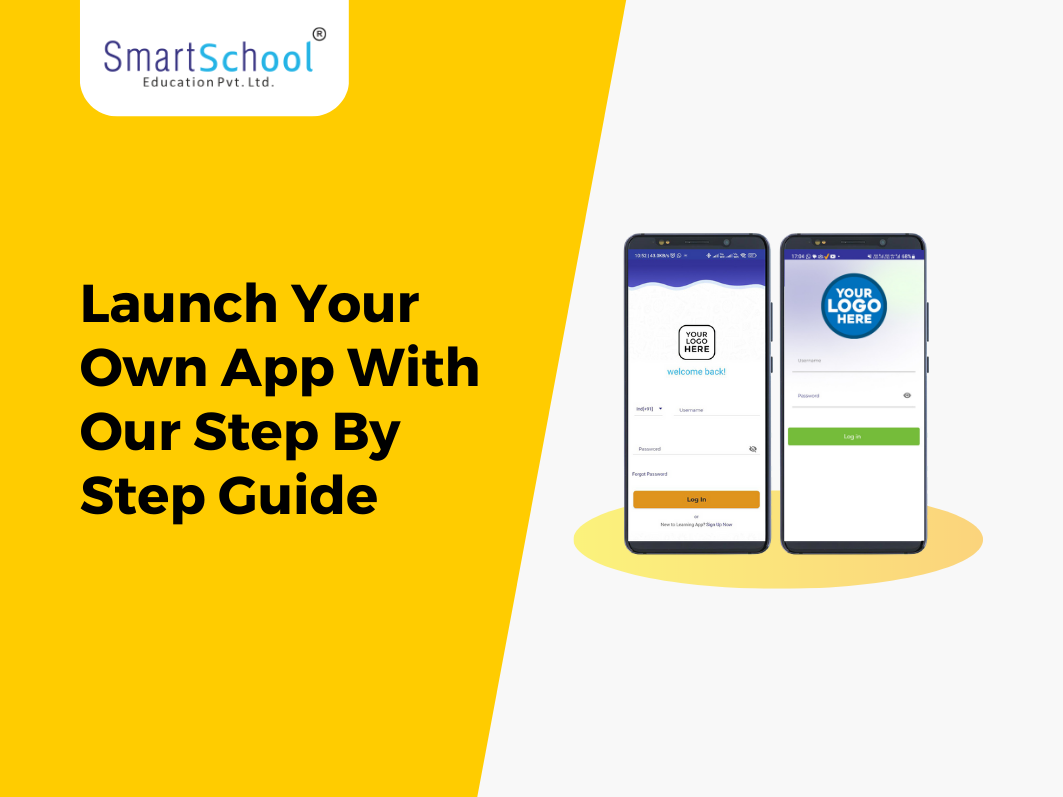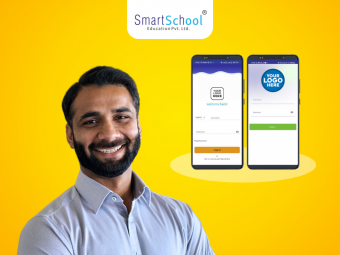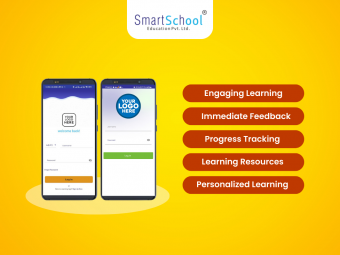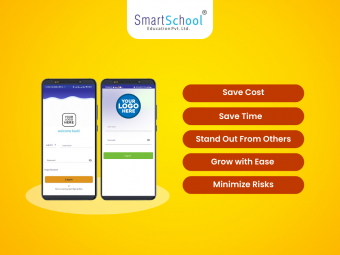
Learning apps have revolutionized education by making it more accessible, personalized, interactive, and collaborative. They provide learners with flexibility in terms of time, location, and learning pace. By leveraging the power of technology, learning apps empower individuals to acquire knowledge, develop skills, and pursue lifelong learning.
As the digital landscape continues to evolve, learning apps will remain instrumental in shaping the future of education and equipping learners for success in an increasingly interconnected world.
Benefits of a Learning App
1. Interactive and Engaging Content:
Learning apps leverage interactive features, multimedia elements, gamification, and simulations to create engaging learning experiences. By making learning interactive and enjoyable, these apps capture learners' attention and foster active participation. This interactivity promotes critical thinking, problem-solving skills, and deeper understanding of the subject matter, leading to more effective learning outcomes.
2. Personalized Learning Experience:
One of the key advantages of learning apps is their ability to deliver personalized learning experiences. Through adaptive technologies and data-driven insights, learning apps can tailor content and activities to each learner's needs, preferences, and learning style. This personalized approach enhances engagement, boosts motivation, and facilitates better knowledge retention and application.
3. Accessibility and Flexibility:
Learning apps provide unprecedented accessibility to educational resources. With the rise of mobile devices, learners can access educational content anytime and anywhere, breaking down geographical barriers and reaching learners in remote areas.
Additionally, learning apps offer flexibility, allowing learners to study at their own pace and fit learning into their busy schedules. This accessibility and flexibility empower learners to take control of their education.
4. Engagement and Motivation:
Learning apps employ gamification techniques, progress tracking, and rewards to boost learner engagement, motivation, and a sense of accomplishment, fostering a positive learning experience.
5. Real-time Feedback:
Learning apps provide immediate feedback on quizzes, assessments, and learning progress, allowing learners to track their performance, identify areas for improvement, and make adjustments accordingly.
6. Self-paced Learning:
Learning apps empower learners to take control of their learning journey, enabling them to set their own learning goals, revisit challenging topics, and explore additional resources according to their needs and interests.
Read More: Developing K-12 Content? 5 Things To Consider For Building Content
How To Develop a Learning App?
In today's digital era, learning apps have gained immense popularity for their ability to provide accessible and interactive educational content to learners of all ages.
Whether you're an educator, a startup founder, or an enthusiast looking to build a learning app, this comprehensive guide will take you through the essential steps involved in developing a successful learning app.
Step 1: Define Your App's Objective:
Begin by clearly defining the objective of your learning app. Identify the target audience, the subjects or skills you intend to cover, and the specific learning outcomes you aim to achieve. This clarity will guide your development process and help you create a focused and effective app.
Step 2: Conduct Market Research:
Thorough market research is crucial to understand the existing landscape and identify gaps or opportunities. Analyze competing learning apps, assess their strengths and weaknesses, and explore user reviews and feedback. This research will help you position your app uniquely and ensure its value proposition stands out.
Step 3: Create a User-Centric Design:
Design plays a vital role in the success of any app. Create a user-centric design that is intuitive, visually appealing, and easy to navigate. Consider the learning preferences of your target audience, incorporate interactive elements, and maintain a consistent and engaging user experience throughout the app.
Step 4: Plan App Features and Functionality:
Based on your app's objective and target audience, determine the key features and functionality you want to include. Examples may include lesson modules, quizzes, progress tracking, user profiles, social learning features, and more. Prioritize essential features and plan for scalability to accommodate future updates and enhancements.
Step 5: Develop Backend Infrastructure:
Establish a robust backend infrastructure to support your learning app's functionality. This involves setting up servers, databases, APIs, and content management systems (CMS) to handle user data, content delivery, and app performance. Ensure data security and scalability are integral components of your infrastructure.
Step 6: Choose the Right Technology Stack:
Selecting the right technology stack is crucial for efficient app development. Consider factors such as platform compatibility, scalability, ease of maintenance, and developer expertise. Common technologies used in learning app development include HTML5, CSS3, JavaScript frameworks, cloud hosting services, and mobile app development frameworks like React Native or Flutter.
Step 7: Develop the App:
Based on the design and infrastructure plans, proceed with app development. Break down the development process into smaller tasks and set milestones to track progress effectively. Follow agile development methodologies to iteratively build and test app features, ensuring regular communication and feedback loops with your development team.
Step 8: Integrate Content Management System (CMS):
Integrate a content management system (CMS) that allows you to manage and update learning materials efficiently. This could include uploading text, images, videos, interactive exercises, and assessments. A flexible CMS empowers you to keep the app content up to date and adapt to changing learning requirements.
Step 9: Implement Analytics and Tracking:
Incorporate analytics and tracking mechanisms to gather user data and insights. Monitor user engagement, behavior, and progress to gain valuable feedback and improve the app's effectiveness. Leverage this data to refine content, identify areas of improvement, and personalize learning experiences.
Step 10: Test and Refine:
Thoroughly test your learning app across different devices, operating systems, and screen sizes to ensure a seamless user experience. Identify and fix any bugs, usability issues, or performance bottlenecks. Conduct user testing and gather feedback to make necessary refinements and improvements before the official launch.
Step 11: Launch and Promote:
Once you're satisfied with the app's performance and user experience, it's time to launch and promote your learning app. Create a comprehensive marketing plan that includes app store optimization (ASO), social media promotion, content marketing, influencer collaborations, and targeted advertising. Engage with your users, gather reviews, and continuously iterate based on user feedback.
Are You Looking To Develop Your Own App? Here’s Why you Should Consider a White Labelled Solution
In the ever-expanding landscape of education technology, whitelabeled learning apps have gained popularity as a convenient and cost-effective solution for educators, startups, and organizations.
Let’s explore the benefits of opting for a whitelabeled learning app over developing a custom app from scratch.
1. Time and Cost Efficiency:
Choosing a whitelabeled learning app significantly reduces development time and costs. Developing a custom app involves extensive planning, design, development, testing, and maintenance, which requires a substantial investment of time, resources, and technical expertise.
Whitelabeled apps, on the other hand, come pre-built with features, functionality, and content, allowing you to launch your e-learning platform quickly and at a fraction of the cost.
2. Established Infrastructure and Support:
Whitelabeled learning apps are typically offered by reputable providers who have already invested in building a robust infrastructure. This includes servers, databases, content management systems, and security protocols.
By choosing a whitelabeled solution, you can leverage the provider's existing infrastructure, ensuring reliable performance, scalability, and data security. Additionally, you benefit from ongoing technical support and updates from the provider, saving you the hassle of managing these aspects on your own.
3. Proven Features and User Experience:
Whitelabeled learning apps often come with a comprehensive set of features and a well-designed user experience. These features have been tested and refined over time, ensuring a seamless and engaging learning environment for your users.
By opting for a whitelabeled solution, you can tap into the provider's expertise in educational technology and benefit from their continuous improvement efforts.
4. Content and Curriculum:
Whitelabeled learning apps frequently include pre-packaged content and curriculum, covering a wide range of subjects and educational levels. This saves you the effort of creating or sourcing educational materials from scratch.
The content is often developed by subject matter experts, ensuring high-quality resources that align with educational standards and learning objectives. This streamlines the process of launching your learning platform and allows you to focus on other critical aspects such as marketing and user engagement.
5. Quick Deployment and Market Entry:
With a whitelabeled learning app, you can rapidly deploy your e-learning platform and enter the market without delays. This is particularly advantageous for educators or organizations looking to capitalize on time-sensitive opportunities or market demand.
By leveraging a whitelabeled solution, you can start delivering educational content and engaging with learners sooner, gaining a competitive edge in the fast-paced world of digital education.
Introducing SmartSchool's Whitelabel Edtech App Solution
SmartSchool's white label edtech app is a comprehensive and customizable solution that empowers educational institutes to deliver interactive and engaging learning experiences.
With a wide range of features and digital content spanning from nursery to class 12th, Smartschool offers institutes the opportunity to enhance their brand presence and provide a powerful learning app and teaching tool within their own brand name.
SmartSchool's Whitelabel Edtech App Solution
“Get an interactive learning app along with digital content from nursery to class 12th and a powerful teaching app, all white labelled in your own institute’s brand name.”
Features Of SmartSchool’s Whitelabel Edtech App Solution
Let’s explore the key features and benefits of Smartschool's white label edtech app.
- 50k+ HD Videos - Animated and Anchor Based Videos
- 2 Million+ Learning Resources
- Huge Question Bank Of 1,00,000+ Questions
- 3,000+ Publishers Mapped For Personalized Learning
- 10,000+ Interactive Tools For Revision
- CBSE, ICSE and All Major Indian State Boards
- Bilingual Content - Both In Hindi and English
- Real-Time Tracking of Student Performance
- Monitor Progress and Content Usage Report
- Special Learning Zone for Dyslexia Students
- Real Life Videos and Science Experiments
- Easily Switch Between Offline and Online Content Mode
- Diagrams, Mapwork, History Timelines & Toppers Answers
- HOTs, Previous Year Question Papers & Formulae Master
- Change video speed, Search content and bookmark favourite videos
- Live classes, Instant Doubt Solution, Assign and Check Assignments
- Add Remarks, Add Study Resources, and Share Recorded Lectures
- WhatsApp, App Notifications and Email Platform
To know more, call 8927089270.




Leave your comment